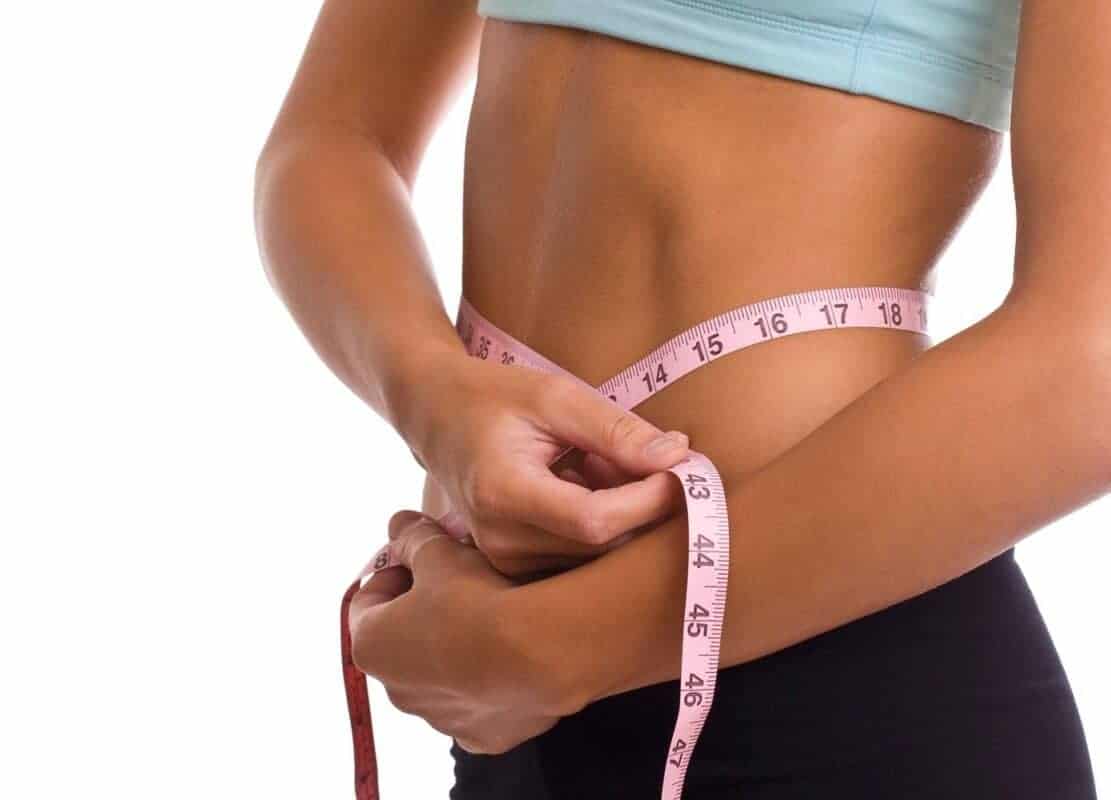A good way to know if we are on the right track when it comes to improving our body composition and losing fat is to measure or assess this percentage of fatty tissue. Although there are several methods and formulas, there is no doubt that those derived from cineanthropometry are the most effective. In the following article, we will show you some ways to obtain your estimated fat percentage through skin folds.
Fat loss, health, and caloric deficit
Before starting to look at the formulas to predict fat through skin folds, it is necessary to consider some fundamental indicators that will help you achieve effective and healthy fat loss.
First, we must understand that all fat loss will require an adequate caloric deficit or negative caloric balance. Without this, we will never achieve real results (1).
This caloric deficit can be caused by reducing daily caloric intake, increasing daily NEAT (non-exercise activity thermogenesis), and to a lesser extent, periodized physical exercise. NEAT is one of the most important points when it comes to drastically increasing energy expenditure (2).
Body composition and caloric deficit
Caloric restriction will vary between subjects; with a higher amount of fatty tissue (more than 15% in men and more than 23% in women), greater energy deficits can be tolerated. In fact, in a study by Nackers L. M., and collaborators (2010), subjects were exposed to aggressive weight loss of between 700 kcal and 1300 kcal, obtaining better adherence results after 18 months of the plan (3).
Despite this, as we said, they were subjects with a very high fat percentage, something we will be able to verify when measuring skin folds. It will also depend on the time the subject is in deficit and the strategies they use daily for it. For example, it is essential to keep protein levels high, managing an average of 1.8g to 2.2g per kilogram of body weight, mainly in subjects with obesity (4).
On the other hand, it is important to note that a very severe or prolonged deficit could also put our cardio-metabolic health at risk and affect our immune system (5).
Therefore, it is recommended to maintain controlled, progressive, and sustainable plans over time if our percentage of muscle mass or fat-free mass is not at an indicated value, which we will see in detail later when we talk about measurement through subcutaneous folds.
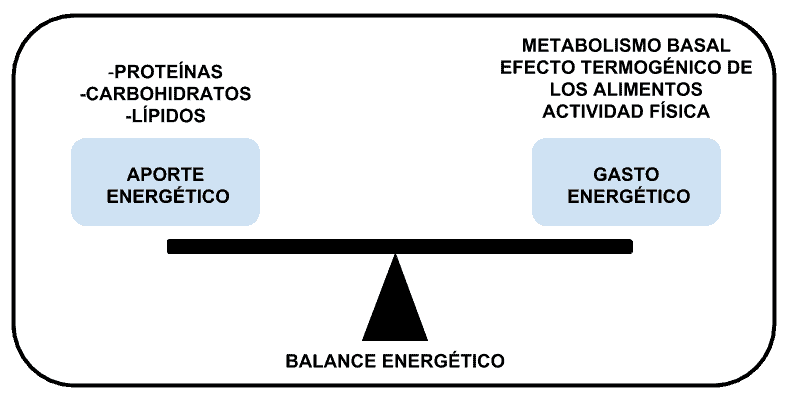
The importance of physical exercise in fat loss
This is one of the most important tools, mainly strength training, I clarify this because many undergo calorie-restricted plans forgetting the importance of muscle tissue, not only as a metabolic organ but also as an endocrine one by releasing multiple myokines with pro-inflammatory functions.
Muscle will be our main ally when exposed to a caloric deficit and improving our body composition, and this will be evident when we assess our skin folds, as adipose tissue is composed of fat and water.
It should be remembered that strength training will be the main stimulus when it comes to protecting our muscle tissue and allowing it to remain in optimal conditions. This will be a fundamental key so that our health is not affected in the process of body recomposition or effective fat loss.
Origin of calories and fat loss
Another important point is the origin of the calories we consume through food, that is, we must try to consume foods with high nutritional density and avoid ultra-processed foods. This, in turn, will be favored in our thermogenesis induced by food.
The authors broadly suggest an 80/20 ratio, perhaps slightly modifiable depending on our fat percentage, but logically we will be able to know that after estimating it, and folds can be a very useful anthropometric tool.
Distribution of macronutrients when losing fat
Another important aspect, obviously the calculation of macronutrients will influence the processes of fat loss and stimulation of beta adrenoreceptors. Despite this, first, you have to look for a plan with adherence; it is useless to go hungry, get frustrated, and abandon the plan the following month.
The most logical thing ina deficit is to take care of protein intake, which should be around 1.8g to 2.2g per kilogram of body weight, and to a lesser extent, lipids, which should not fall below 0.8 to 1g/kg of weight to avoid hindering hormonal processes.
On the other hand, if your interest is to train at high intensity, the rest could be occupied by carbohydrates, as they are an important fuel in strength training and will benefit us by maintaining adequate performance. It should be noted that in these fat loss processes, a ketogenic or low-carb diet can also be followed, but it would not be the most optimal (6).
How to measure skin folds? A simple way to obtain body density
A quick way to estimate body fat can be done with a simple caliper. In this way, we will measure the most important adipose tissue folds that allow us to estimate body density. Many of these formulas were developed by Durnin and Womersley (1974) and have been used by many researchers in scientific studies (7).

It should be noted that these formulas differ greatly according to the gender and age of the subject to be evaluated, which is why the equations are based on the logarithm of the sum of 4 key skin folds in this process (triceps, subscapular, suprailiac, and biceps).
How to measure the triceps subcutaneous fold
The triceps fold is located at the midpoint of the acromioradial, on the back of the arm. The fold is taken vertically and runs parallel to the longitudinal axis of the arm.
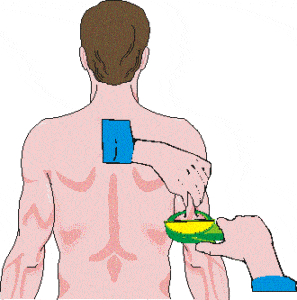
How to measure the subscapular subcutaneous fold
The subscapular fold is measured using the lower angle of the scapula as a reference, in an oblique direction downwards and outwards, forming a 45º angle with the horizontal.
To perform this measurement, the lower angle of the scapula is palpated with the left thumb. At this point, we align the index finger and move the thumb down, rotating it slightly clockwise to take the fold in the convenient direction.
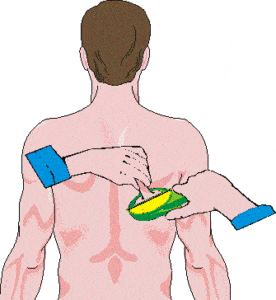
How to measure the suprailiac subcutaneous fold
The suprailiac fold is located just above the iliac crest in the mid-axillary line. The suprailiac fold runs forward and downward, forming an angle of about 45º with the horizontal line. To facilitate the measurement, it is important to place the right hand across the chest, thus facilitating the measurement.
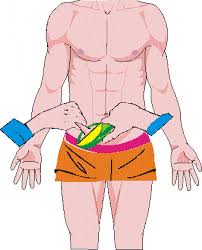
How to measure the biceps subcutaneous fold
The biceps fold is located at the midpoint of the acromio-radial, on the front of the arm. The fold is vertical and runs parallel to the longitudinal axis of the arm, very similar to its antagonist, the triceps.
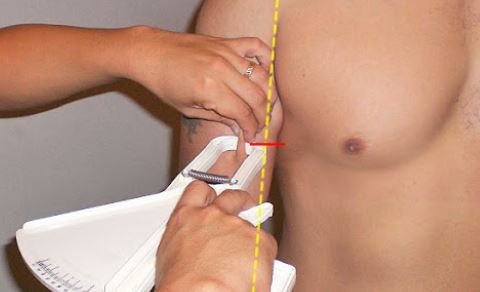
Durnin and Womersley equations to obtain body density
Once we know how to take the folds, it is time to start obtaining body density using age range and sex as references. That said, the equations are as follows:
Equations for men by age range
- 17-19 years: body density = 1.1620 – 0.0630 x (log ∑)
- 20-29 years: body density = 1.1631 – 0.0632 x (log ∑)
- 30-39 years: body density = 1.1422 – 0.0544 x (log ∑)
- 40-49 years: body density = 1.1620 – 0.0700 x (log ∑)
- 50+ years: body density = 1.1715 – 0.0779 x (log ∑)
Equations for women by age range
- 17-19 years: body density = 1.1549 – 0.0678 x (log ∑)
- 20-29 years: body density = 1.1599 – 0.0717 x (log ∑)
- 30-39 years: body density = 1.1423 – 0.0632 x (log ∑)
- 40-49 years: body density = 1.1333 – 0.0612 x (log ∑)
- 50+ years: body density = 1.1339 – 0.0645 x (log ∑)
It should be noted that the ∑ is equal to the sum of the folds. To give a practical example, if our age is 28 years, male, and our sum of folds is 29 mm, our Durnin and Womersley body density calculation gives us a result of 1.069. Once this result is obtained, we can start calculating our fat percentage.
How to obtain the fat percentage once the folds are taken
Body density formulas require an additional calculation to estimate body fat percentage by folds. There are two formulas for this stage, known as the Brozek and Siri equations (9):
- Brozek equation: body fat percentage = (457 /body density) – 414
- Siri equation: body fat percentage = (495/body density) – 45
Continuing with the previous body density example (1.069), if we use the Brozek equation, our fat percentage would be 13.5%. If we place ourselves in the table below, we would be within a very low fat percentage.

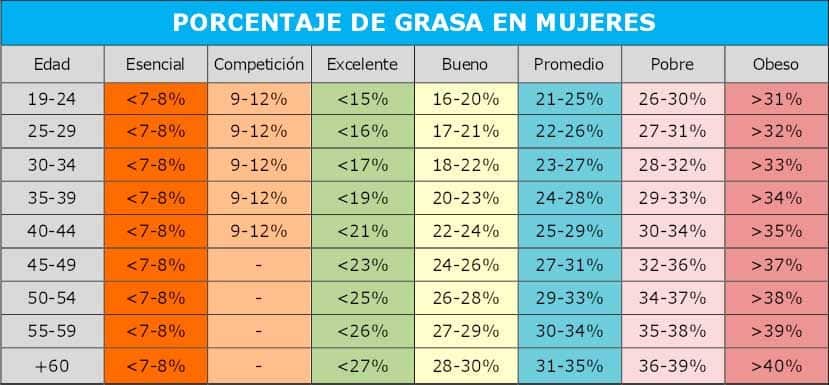
Conclusion on 4 skin folds to measure body fat
The use of 4 folds to measure body fat can be an effective strategy, neither better nor worse, just as we can use the somatotype. It is a strategy that we must apply in an ideal context and individually.
The ideal in these evaluation stages would be to perform a complete anthropometry, assessing not only folds but also diameters and perimeters, although we would encounter a much greater time variable and a similar estimation error in people with very high fat percentages.
Despite this, assessing our body composition is a fundamental process to know from which position we start, if our nutritional or physical exercise plan is yielding results, and if we are on the right track in the process of improving our body composition.
Body fat calculator
This calculator provides us with an estimate of the fatty tissue in our body. Although it is true, we must keep in mind that it is only an approximation.
If we really want to measure our fat percentage more accurately, we must use bioimpedance or fold measurement for greater accuracy.
Body fat ranges in men
Below we provide a chart with the estimated fat percentage in men at different levels, from essential (which would be the minimum) to the maximum, which would be obesity.
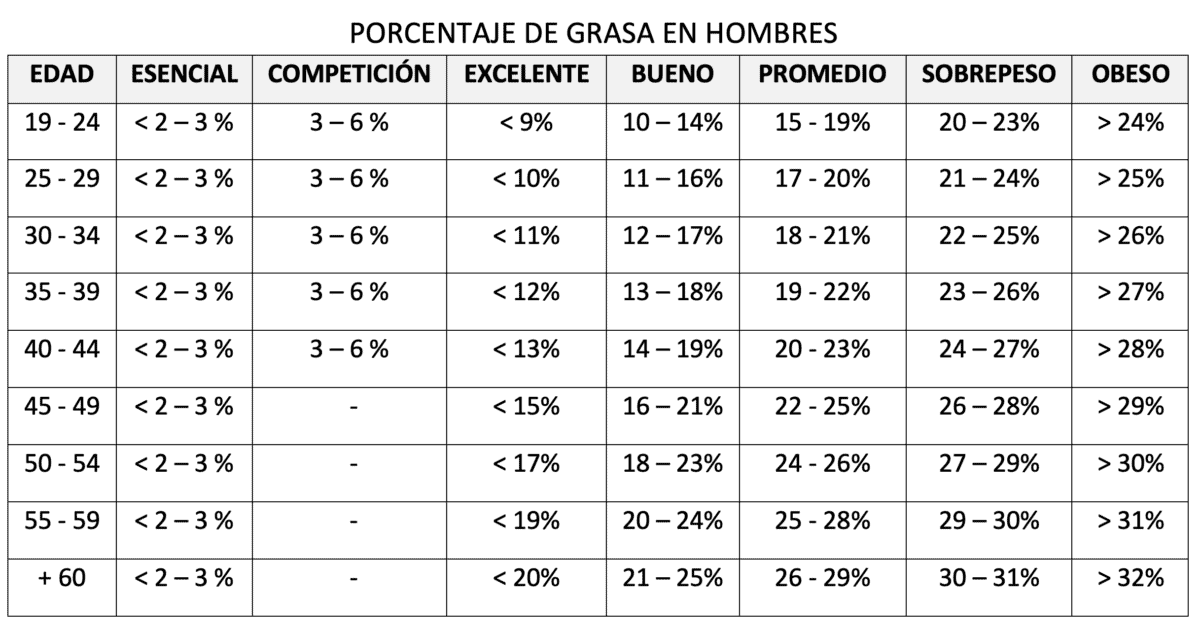
Body fat ranges in women
Below we provide a chart with the estimated fat percentage in women at different levels, from essential (which would be the minimum) to the maximum, which would be obesity.
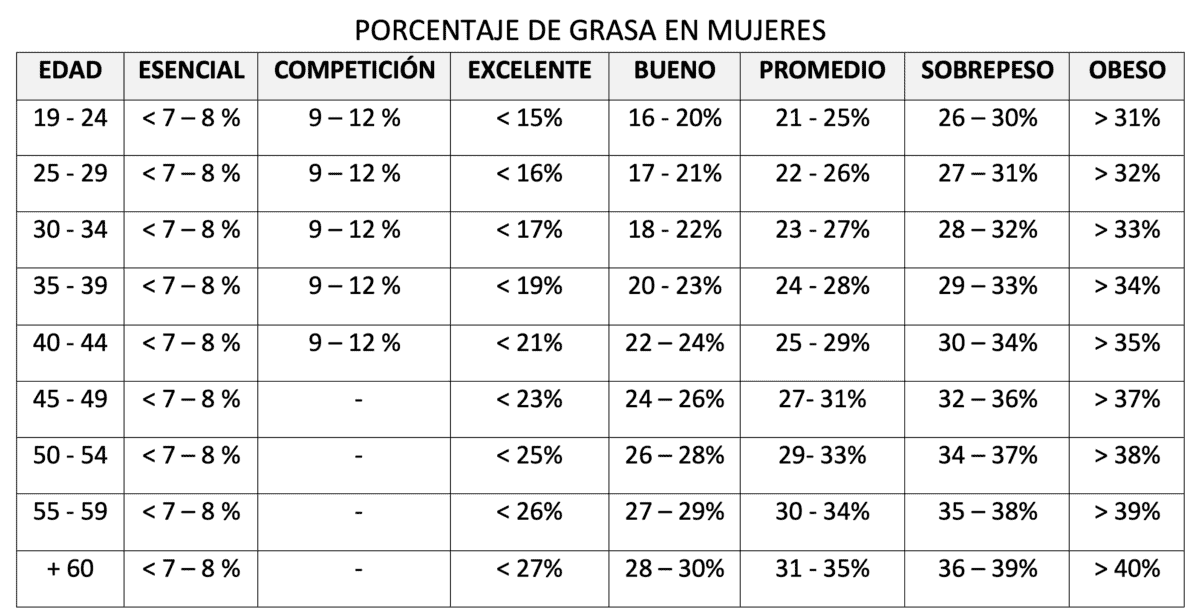
Bibliographic reference
- Strasser, B., et al (2007). Fat loss depends on energy deficit only, independently of the method for weight loss. Annals of nutrition and metabolism. 51(5), 428-32. (link)
- Chung, N., et al (2018). Non-exercise activity thermogenesis (NEAT): a component of total daily energy expenditure. The Journal of Exercise Nutrition & Biochemistry. 22(2), 23–30. (link)
- Nackers, L. M., et al (2010). The Association Between Rate of Initial Weight Loss and Long-Term Success in Obesity Treatment: Does Slow and Steady Win the Race?The Association Between Rate of Initial Weight Loss and Long-Term Success in Obesity Treatment: Does Slow and Steady Win the Race?. International Journal of Behavioral Medicine. 17(10), 161 – 167. (link)
- Westerterp-Plantenga, M. S., et al (2004). High protein intake sustains weight maintenance after body weight loss in humans. International journal of obesity and related metabolic disorders. 28(1), 57-64. (link)
- Hernandez, G. A. (2019). Muscle, metabolic paradigm in nutritional recovery. Nutrición hospitalaria. 36(2), 4-11. (link)
- Díaz, J. & Espinoza-Navarro, O. (2012). Determination of Fat Mass Percentage by Measuring Body Circumferences, Weight and Height: A Validation Study. International Journal of Morphology. 30(4), 1604-1610. (link)
- Bejarano Carrillo, J. A., et al (2015). Macronutrients, food intake, and body weight; role of fat. Nutrición hospitalaria. 31(1), 46-54. (link)
- Guerra, R. S. et al (2010) Accuracy of Siri and Brozek equations in the percent body fat estimation in older adults. The Journal of Nutrition, health and aging. 14(9), 744-8. (link)
